It has been said that the greatest enemy of Rome was Rome itself, and this is certainly true of the period known as the Crisis of the Third Century (also known as the Imperial Crisis, 235-284 CE). During this time of almost 50 years, over 20 different emperors ruled in quick succession; a statistic which becomes more alarming when compared with the 26 who reigned between 27 BCE and 235 CE. These rulers – known as the “barracks emperors” because they were supported by and largely came from the army – were generally motivated by their own ambition and personal interests and so served themselves before the interests of the state.
Although a few of these emperors proved themselves worthy of rule, they could not escape the climate of the times which rewarded direct and discernible results on the part of leadership, even if those results were not always in the people's best interest. The Crisis of the Third Century began when the emperor Alexander Severus (222-235 CE) decided to pay the German tribes for peace instead of meeting them in battle and his troops, considering this course dishonorable, killed him. Such an action against a sitting emperor would have been considered unthinkable in the past but became so commonplace during this period that elevating a man to the position of emperor was almost a death sentence.
After the death of Alexander Severus, a new paradigm for a ruler became standard – of emperors relying on the goodwill of the military in general and their own commands specifically – and this would characterize the whole of the period. Emperors could no longer rule according to their vision of the best version of Rome; they now had to make policy with their popularity among the army in mind.
At this same time, when Rome was, for the most part, lacking strong leadership, suffering plague, inflation, and other domestic difficulties, external threats presented themselves in the form of so-called “barbarian tribes” and others who either sought to topple Rome or simply remove themselves from the confusion and disorder which had come to characterize the Roman Empire. Chief among Rome's enemies during this period were:
- King Cniva of the Goths (and later King Cannabaudes, claimed by some scholars as the same man c. 251-270? CE)
- King Shapur I (240-270 CE) of the Sassanid Persians as well as his son, Hormizd I (270 - c. 273)
- Postumus of the Gallic Empire (260-269 CE) and those who ruled after him (Marius, Victorinus, Domitianus, and Tetricus I), most notably Tetricus I (271-274 CE)
- Zenobia of the Palmyrene Empire (267-272 CE) and her Egyptian general Zabdas (c. 267- c. 273 CE)
All of these rulers played a part in the crisis which beset Rome in the 3rd century CE. Cniva was the first barbarian king to kill a sitting emperor in battle; Shapur I was the first to capture one; Postumus was a Roman governor who decided he could do better creating his own empire, and Queen Zenobia of Palmyra did the same.
From 235 CE until Emperor Aurelian came to power in 270 CE there were very few Roman leaders capable of meeting these threats. At war with each other, and surrounded by pressing challenges, most of the emperors of the 3rd century CE failed the state and the people they were supposed to protect and lead.
Many of the problems they faced were not at all new; what made them seem so was the inability of the emperor to resolve any of them. The vast scope of the empire at this time, which made the old model of rule by one emperor obsolete, and an inability to imagine one more effective and practical, left Rome in a position of weakness, where any man promising results was elevated at the expense – and life – of his predecessor.
Due to the various emperors' failings – as well as other serious problems with the bureaucracy and general function of the Roman state – adversaries like Cniva and Shapur I, as well as former friends like Postumus and Zenobia – were able to gain significant advantages and, in the case of the latter two, even form their own empires.
Cniva
Cniva (also given as Kniva) was the king of the Goths who defeated the emperor Decius at the Battle of Abritus in 251 CE. Scholar Michael Grant observes that “in Kniva the Goths had a leader of unprecedented caliber, whose large-scale strategy created the gravest perils the empire had yet undergone” (31). Cniva may have learned his strategies through service in the Roman army or may have simply been a careful observer of his adversary. Little is known of him outside of his campaign in 251 CE in which he lay siege to the Roman city of Nicopolis and successfully took Philipopolis, killing over one hundred thousand Roman citizens and enslaving survivors.
Emperor Decius was driven from the field by Cniva once and, when he regrouped and attacked again, Cniva had all the advantages. Cniva knew the terrain, was able to position his troops effectively, and lured Decius and his army into the marshy ground of a swamp. The Roman formations were rendered ineffective on this ground, and Cniva slaughtered most of them, including Decius and his son. Afterwards, the Romans had no choice but to allow Cniva to go on his way with his many prisoners and all the treasures of Philipopolis.
After the Battle of Abritus, Cniva is not heard from again but is associated with the later King Cannabaudes (also given as Cannabas, c. 270 CE) of the Goths, who was killed in battle, along with 5,000 of his troops, in an engagement with Aurelian (270-275 CE) in c. 270 CE. It would not be impossible for the same man to have led the Goths in 251 and in 270 CE. The Battle of Naissus (268 or 269 CE) pit the emperor Claudius II against a Gothic force led by an unnamed king who could have been Cniva.
Whether Cniva was the same leader as Cannabaudes, his ability to strategize and his skills in warfare were not handed down to the next generation. The identification of Cniva with Cannabaudes makes sense in that, according to reports, the Gothic king was killed along with 5,000 of his men and the secrets of his success would thus have been lost with those soldiers who had planned and fought with him. After Cniva's successes, there are no other reports of Goths taking Roman cities by siege nor in any other manner. The later Goth commander Fritigern (c. 380 CE) famously avoided engagements involving cities, preferring guerilla warfare tactics.
Shapur I & Hormizd I
In the east, however, there was another ruler who had no such problem: Shapur I. Shapur I was the son of Ardashir (224-242 CE), the founder of the Sassanian dynasty, who elevated Shapur I to co-ruler and instructed him in warfare. Although Shapur I was an able administrator and ruler whose reign is recorded in glowing phrases by everyone except Roman writers, he thought of himself as a warrior-king first and tried to embody this ideal.
Shapur I continued his father's policies of aggression toward Rome and took Roman fortresses and cities in Mesopotamia early in his reign. He was met in battle by the emperor Gordian III, who was only 17 years old at the time, and who relied heavily on the advice and strategies of his father-in-law and Praetorian Prefect, Gaius Timesitheus. Shapur I was driven back by the Roman forces at first, but when Timesitheus died of the plague the situation reversed; Gordian III had little military experience and lacked the skill to counter Shapur I's strategies. When Gordian III failed to meet the expectations of his troops, they killed him, and he was replaced by Philip the Arab.
Philip quickly made peace with Shapur I and paid him 500,000 denars as part of the treaty. Philip ceded the disputed territory of Armenia to Shapur I, who sent his son Hormizd I (who had fought with him against the Romans) to rule it. Hormizd I ruled well as viceroy of Armenia, maintaining his father's policies regarding freedom of religion and establishing a peaceful and prosperous reign. An able administrator, as well as a courageous and skilled warrior, Hormizd I was widely respected for his initiatives in the short time he ruled over Armenia. Fairly quickly, however, Philip discarded the treaty and reclaimed the region; this action obviously broke the peace and plunged the region back into war.
Shapur I ravaged through Mesopotamia and conquered the Roman province of Syria, taking the city of Antioch. Hormizd I accompanied his father on this campaign and held important positions of command and administration throughout the course of it. The emperor Valerian marched against Shapur I and Hormizd I and drove them from the city, but in the course of pursuit, the plague struck the Roman army and they had to withdraw back into Antioch.
Shapur I and Hormizd I lay siege to the city and Valerian had no choice but to seek terms. He and his senior staff went out to meet the Persian leaders to discuss the city's surrender but were taken captive instead and the city fell to the Sassanid forces. According to legend, Shapur I used Valerian as a footstool to mount his horse and, when the emperor died, had his body stuffed with straw and put on display.
Thus far, Shapur I's instincts, skill, and simple good fortune had brought him close to realizing his ambition of conquering all the eastern Roman provinces, but at this point, he made a grave mistake. Odaenathus, the Roman governor of the Syrian city of Palmyra, wrote Shapur I an offer of alliance; Shapur I rejected this in the clearest terms possible.
In the chaos which characterized the 3rd century in Rome, Odaenathus was probably hoping for some semblance of order for his home region and Shapur I would have seemed a better choice than any of the Roman emperors. Shapur I rebuffed the offer, stating that Odaenathus was nowhere near his equal and should look forward to becoming his vassal. Odaenathus, insulted and enraged, then mobilized a force and drove Shapur I out of Roman territory.
Shapur I's victory over Valerian was among his last. Odaenathus defeated the Sassanid Persians in every encounter. Regarding this, scholar Philip Matyszak observes how Shapur I “discovered that a well-led Roman army was still the world's finest fighting force” (239). After Odaenathus' campaigns, Shapur I lost any gains he had made and retreated back to his own borders. The rest of his reign focused chiefly on domestic issues while keeping a wary peace with Rome. When he died, he was succeeded by Hormizd I who continued his policies, resulting in a kind of cold war between the Sassanids and Rome. Hormizd I made no overt hostile gestures toward Rome but certainly offered no sign of cordial relations between the two states.
Odaenathus, having beaten back the Persian threat, was rewarded by Emperor Gallienus with greater power and authority as governor of all of Rome's eastern provinces. He was killed while hunting in 267/268 CE, and his wife, Queen Zenobia, took over as regent for their young son Vaballathus. Soon, however, it would be clear that Zenobia had grander plans than simply place-holding for another.
Zenobia & Postumus
Zenobia inherited Odaenathus' territory as well as his army and their brilliant Egyptian general Zabdas. Although careful not to antagonize the Roman emperor Gallienus, or show herself officially in any light other than as an acceptable Roman regent, she expanded her territory and entered into negotiations without Rome's consent. In every way but official title, she reigned as supreme empress over the eastern regions of what had been the Roman Empire.
One of her most impressive moves was against Roman Egypt. Egypt was Rome's breadbasket, supplying the empire with grain, and was among its most prized provinces. Zenobia sent Zabdas to Egypt to put down a revolt – which she most likely instigated to give herself just cause – and then annexed the country. Officially, she could claim that this action was in Rome's best interest and she had only been keeping the peace, but she acted without consulting the emperor, and her annexation of Egypt certainly elevated her reputation at Rome's expense.
She also issued her own currency, gave herself and her son royal titles reserved for the emperor and his family, and entered into negotiations with the Sassanid Persians. All of these initiatives strengthened her position as empress of her own realm, but if Rome objected, she could justify each one as being for Rome's benefit.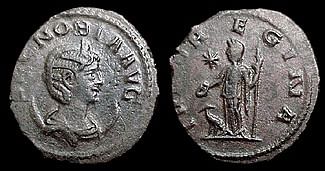
At the same time Zenobia was consolidating her power in the east, another former friend of Rome, and a sitting provincial governor, did the same in the west. Postumus was the Roman governor of Upper and Lower Germany under the co-rule of Gallienus and Valerian. Postumus had already defended the provinces in the west from barbarian incursions and felt he needed more power and authority to perform his duties more efficiently. Valerian was fighting in the east and Gallienus was busy with his own campaigns in the west and north. Frustrated by the inability to do what he felt he should, Postumus marched on the Roman city of Cologne, where the son and heir of Gallienus had been sent for his own safety, and killed him as well as his bodyguard.
Postumus then declared himself emperor of his own realm – the Gallic Empire – which comprised Germany, Gaul, Hispania, and Britannia. He set up his own senate, mobilized his own troops, and entered into his own negotiations but insisted, all the while, that he was acting in Rome's interests. After Valerian was captured by Shapur I, Postumus grew bolder and Gallienus made time from his campaigns to launch an attack on the Gallic Empire but was driven back. Gallienus was killed by his own troops shortly after this event, and Claudius Gothicus and then his brother Quintillus were emperor before Aurelian took power.
Aurelian's Restoration & Tetricus I
Aurelian was a soldier, not a politician, and had neither the time nor the patience for inquiries into why Zenobia or Postumus had acted as they did. As soon as he had defeated the Goths (killing Cannabaudes/Cniva), as well as the Vandals, Jugunthi, Alammani, and others, he marched on the Palmyrene Empire. At the Battle of Immae in 272 CE he had his cavalry engage and then feign retreat in a rout, and when the Palmyrene cavalry pursued, he led them into a trap in which his forces wheeled about and drove into the opposing forces, killing most of them and scattering the rest.
Immae was a stunning victory for Aurelian, but Zenobia and Zabdas escaped and reformed their troops against him. At the Battle of Emesa, using the same tactic he had at Immae, Aurelian defeated Zenobia's forces and Zabdas was probably killed; he is not mentioned in any later reports. Zenobia, after trying to escape again, was caught and brought to Rome. Aurelian showed mercy to Palmyra and many of the ringleaders of the Palmyrene Empire, but when the city rebelled a second time, he hurriedly returned and destroyed it, massacring the inhabitants.
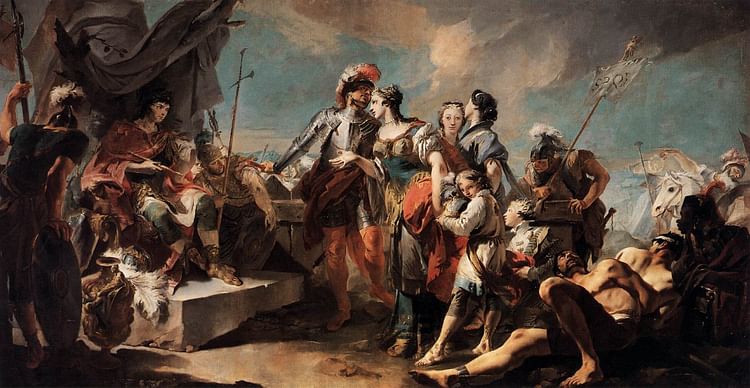
After taking care of Palmyra, Aurelian marched west for the Gallic Empire. Postumus was dead by this time, killed by his own troops in 269 CE when he tried to prevent them from sacking the Roman city of Mainz which had rebelled. The position of emperor had passed to others (Marius, Victorinus, and Domitianus) before Tetricus I was nominated by Victorinus' mother.
Postumus had been an able administrator and commander, but Marius, Victorinus, and Domitianus were much weaker and far less effective. Marius was a blacksmith and possibly a foot soldier who was chosen by the troops at Mainz, most likely because he led the opposition to Postumus' command to spare the city. He was only in power briefly before being assassinated. Victorinus, a Praetorian tribune, then became emperor and although he was an able military leader, he could not control his lust for women. He was murdered after trying to seduce the wife of one of his commanders. The usurper Domitianus then seized power but was overthrown by Tetricus I. Tetricus I is considered the only true successor to Postumus owing to his personal character and his strong military and administrative skills.
After the assassination of Postumus, Hispania left the Gallic Empire and declared their allegiance to Rome. At this same time, more German tribes rebelled against the Gallic rule from Trier. Victorinus had attempted to control these revolts with more or less success but was not able to restore stability to the region. This was the volatile situation Tetricus I inherited when he became emperor. He made his son (also named Tetricus) his co-emperor in order to share the burden of responsibility for the military and government administration and then went to work to restore the empire. He put down the rebellions and stabilized Germania and Gaul but any further initiatives were halted when word came that Aurelian had defeated Zenobia and was coming for the Gallic Empire next.
When Tetricus I heard that Aurelian was marching against him, he allegedly sent him a letter asking the emperor to save him and his son and offering to surrender. Much debate has gone on surrounding this allegation, and it is thought by some scholars to be a later invention of Aurelian to discredit Tetricus I by accusing him of betraying his troops to save himself. It is clear that Tetricus I was an able leader and was popular among his troops; it seems unlikely he would have brokered a deal to surrender before battle while still committing his army to the field.
Whether Tetricus I made such a deal with Aurelian or not, the Roman forces slaughtered those of the Gallic Empire at the Battle of Chalons in 274 CE, and Tetricus I and his son were taken captive. They were spared, as were other officials in the Gallic government, which gave rise to the rumors that he had betrayed his troops. Tetricus I was given an administrative office in a Roman province (as was his son) and, just like Zenobia, lived comfortably for the rest of his life. Aurelian had now restored the empire but would not live much longer to enjoy his accomplishments.
Aurelian had defeated the Goths as well as a number of other invading tribes, kept the Persians at bay, brought both the Gallic and Palmyrene empires back into the Roman fold, and reformed abuses of the mint at Rome, thus stabilizing the currency. Aurelian's reign shows every indication of continuing on this trajectory toward reform and restoration, but it was cut short by those he mistakenly believed he could trust. In keeping with the spirit of the times, even a great emperor like Aurelian could not finally triumph over his own people, and he was killed by his commanders who mistakenly believed he was planning to execute them.
Rome's Greatest Enemy
Even though Rome had many enemies throughout the 3rd century CE, the greatest threat to its continued existence was itself. The problems Rome faced at this time, as noted earlier, were not new – there were invasions and internal difficulties decades and even centuries earlier – what was new was Rome's inability to deal with these issues. A lack of patience and policy defined the period of 3rd-century CE Rome, and many decisions were made based on fear rather than hope.
This climate invited problems from external sources like the Goths and the Sassanid Persians and others and encouraged leaders like Zenobia and Postumus to create their own empires, but these kinds of situations would have once been dealt with decisively and swiftly. In the 3rd century CE, they were handled inefficiently or not at all until the reign of Aurelian.
It is in this way that Rome was its own greatest enemy during this period. By the time of the 3rd century CE, the corruption of the state, the decline in a moral and social paradigm once provided by the pagan religion, and the migration of other peoples across and around the borders of the empire all led to imperial decisions made in the interests of immediate and popular results. The external enemies of Rome were certainly a very real threat, but on a certain level, their victories were simply manifestations of the decay of what was once the Roman Empire.
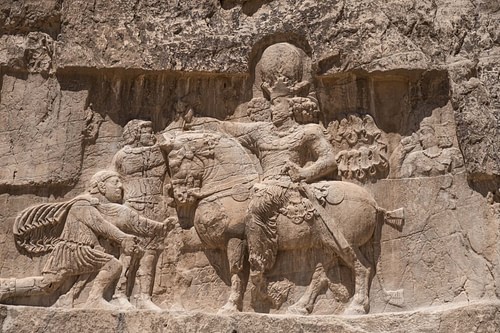
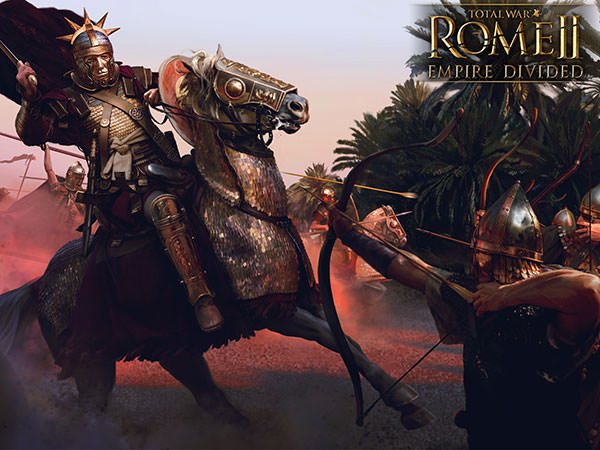
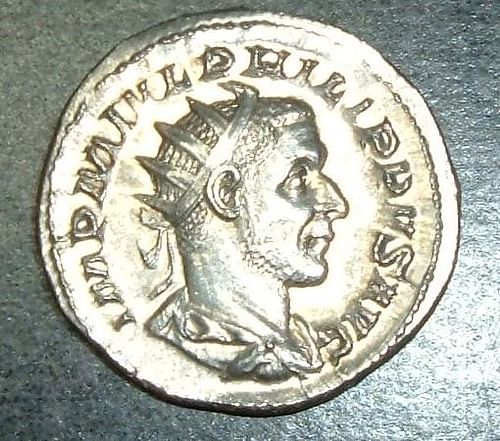
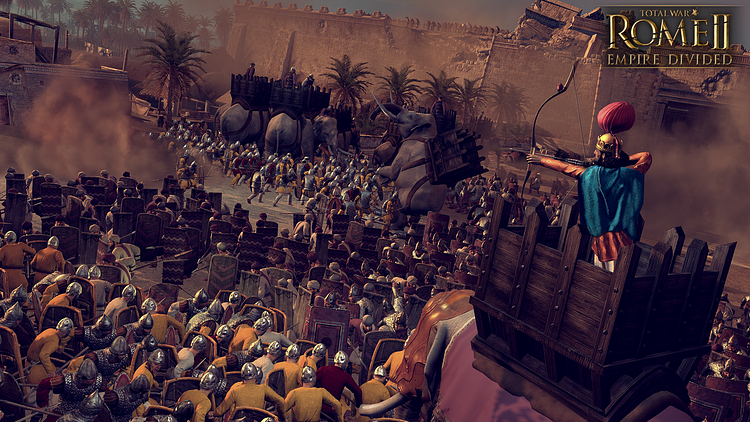
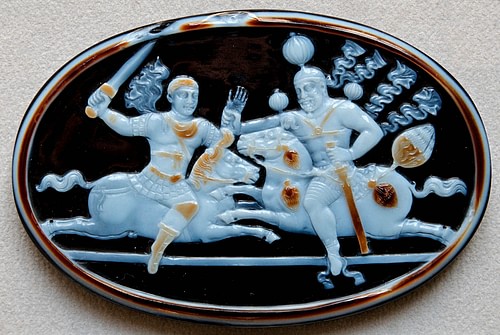
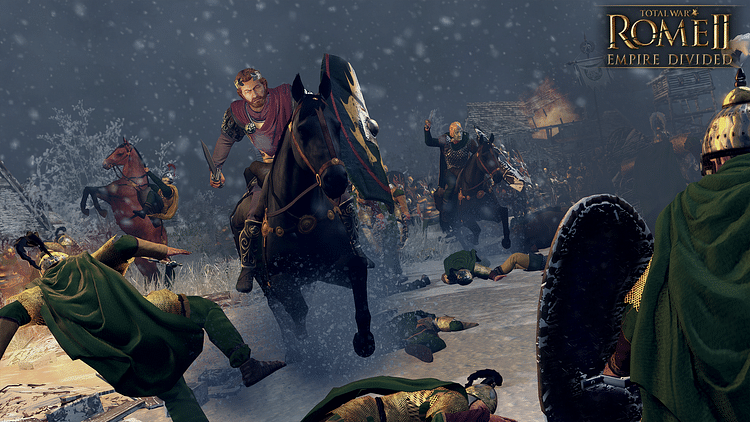

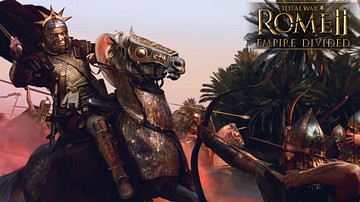
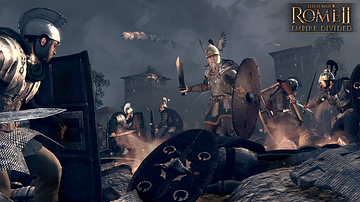
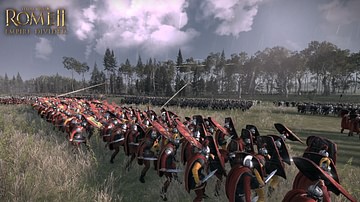
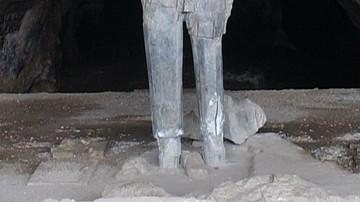
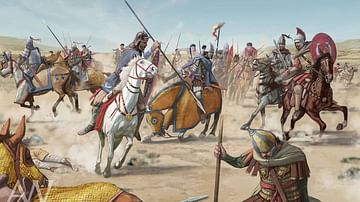



![Historians of Ancient Rome (2nd, 04) by Mellor, Ronald [Paperback (2004)]](https://m.media-amazon.com/images/I/31tvwChmLcL._SL160_.jpg)
